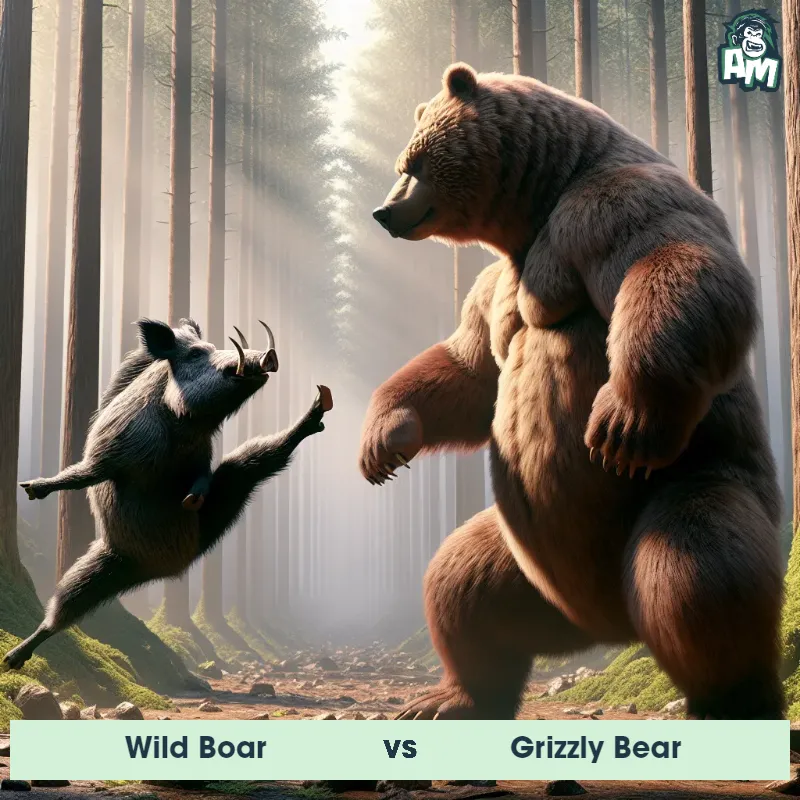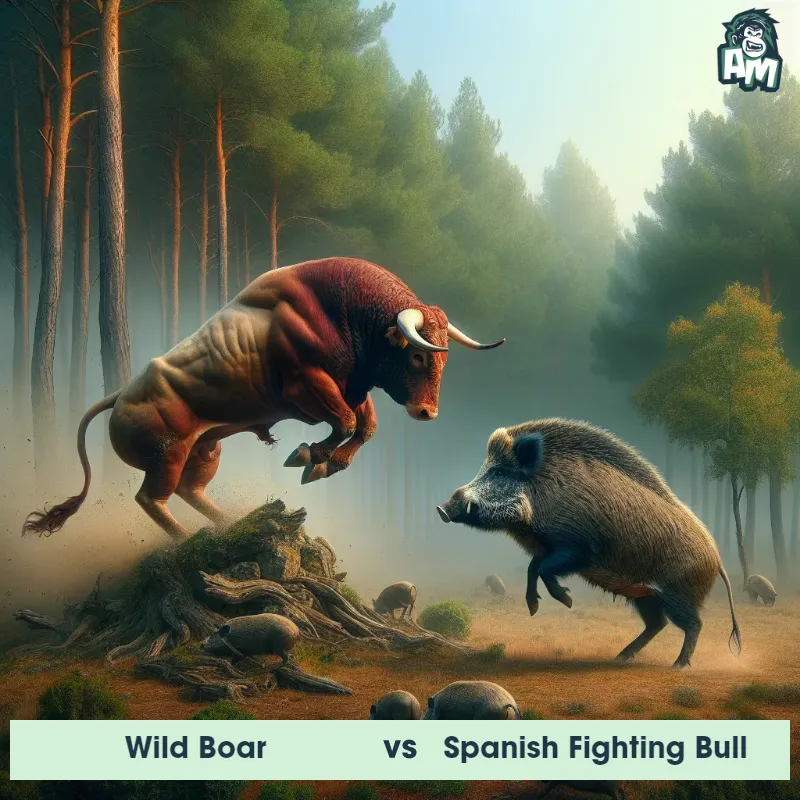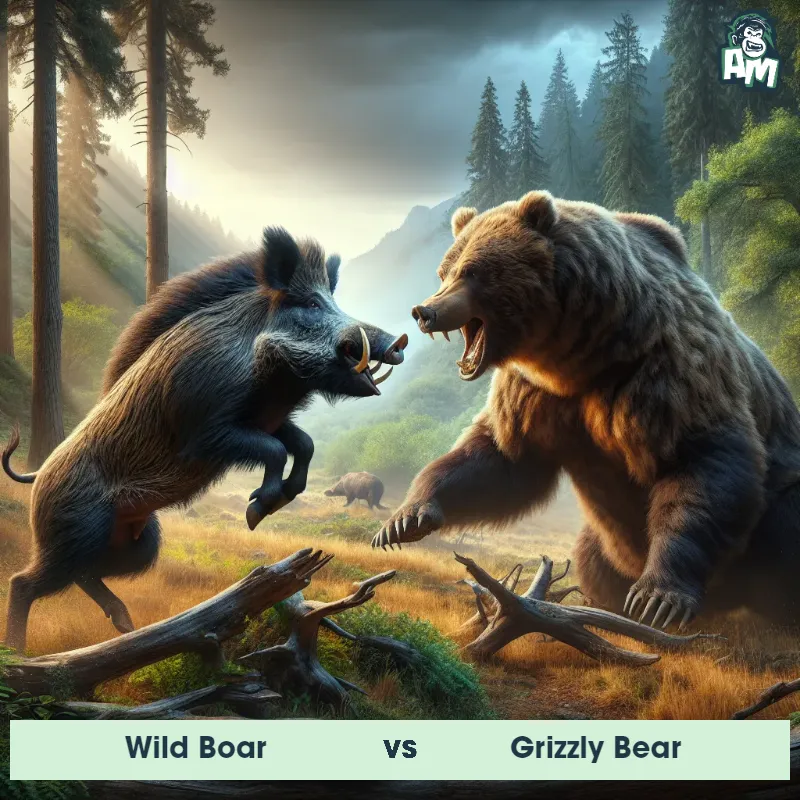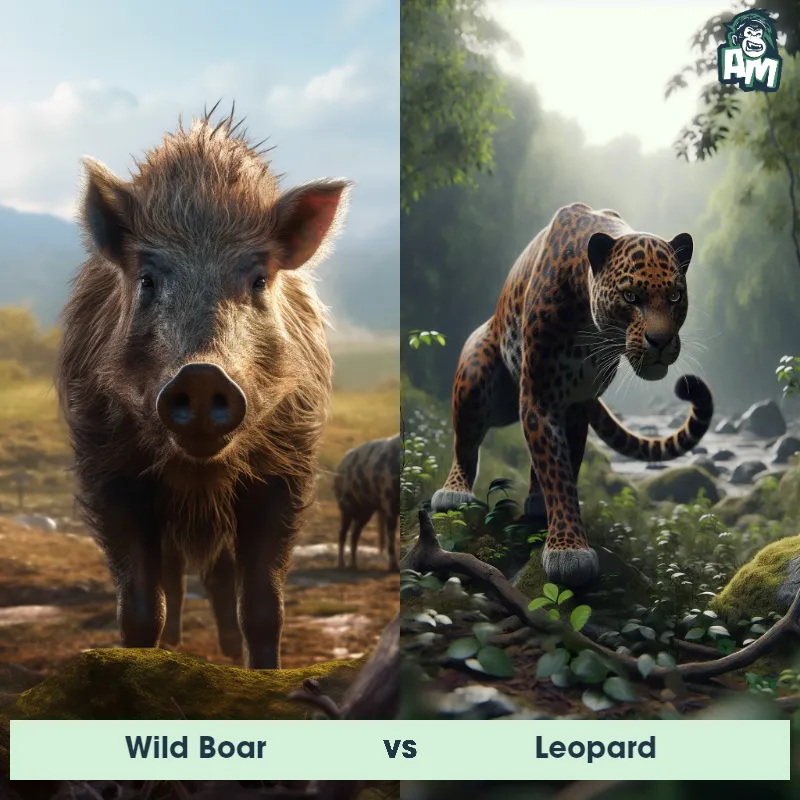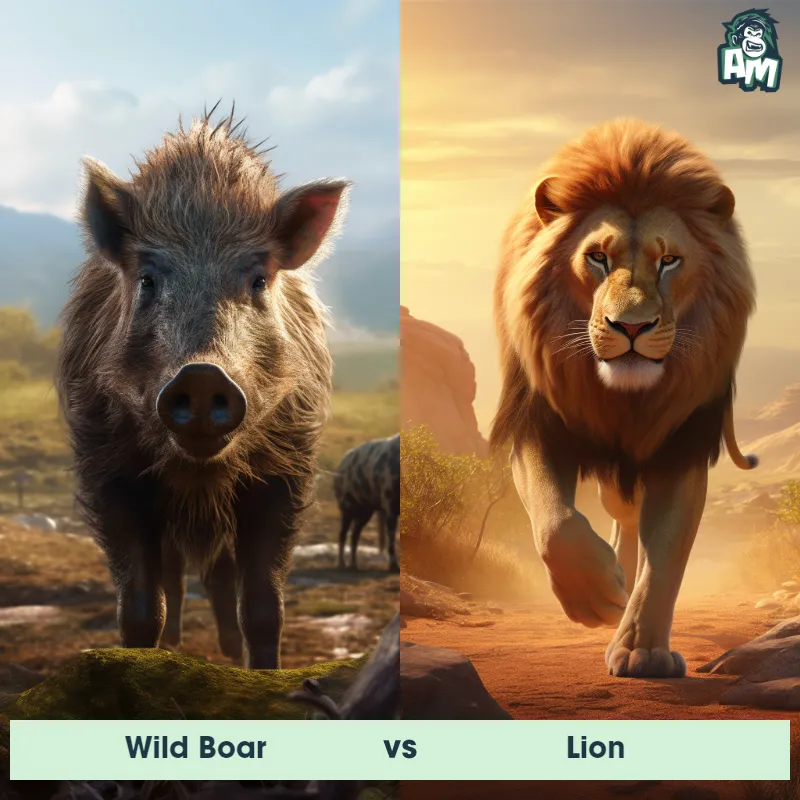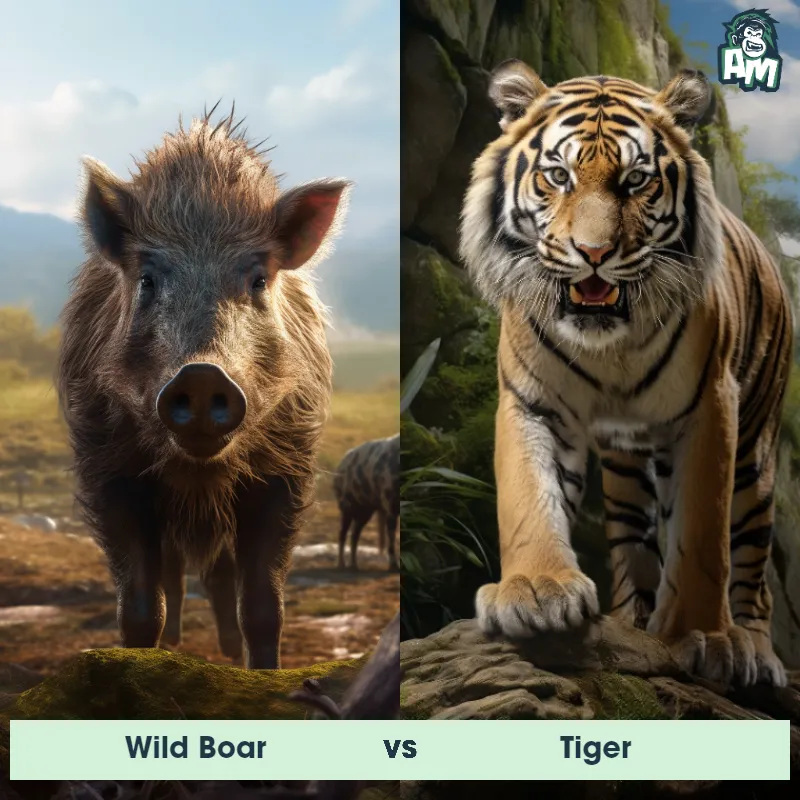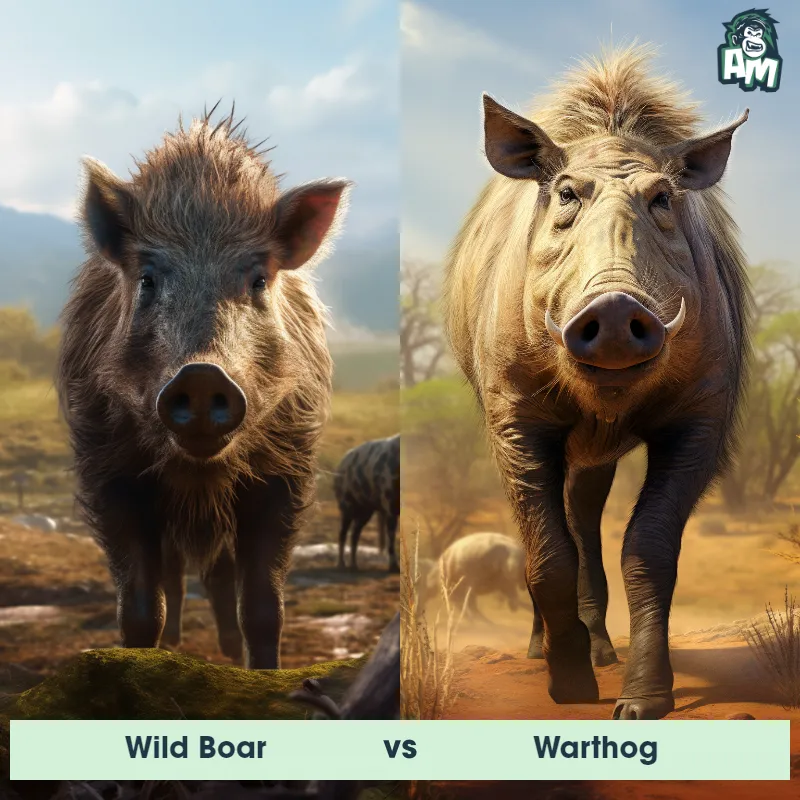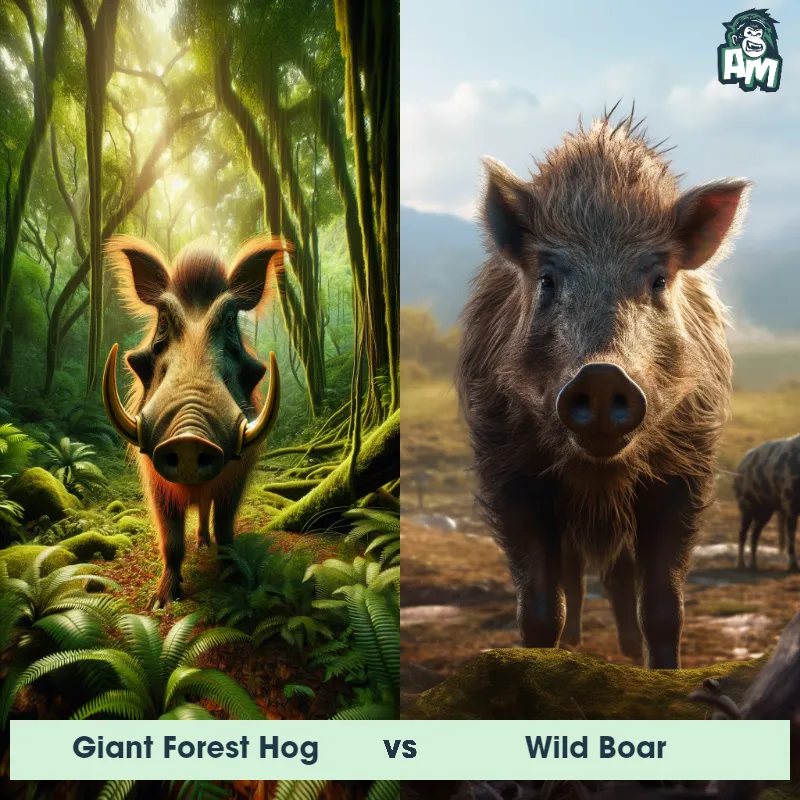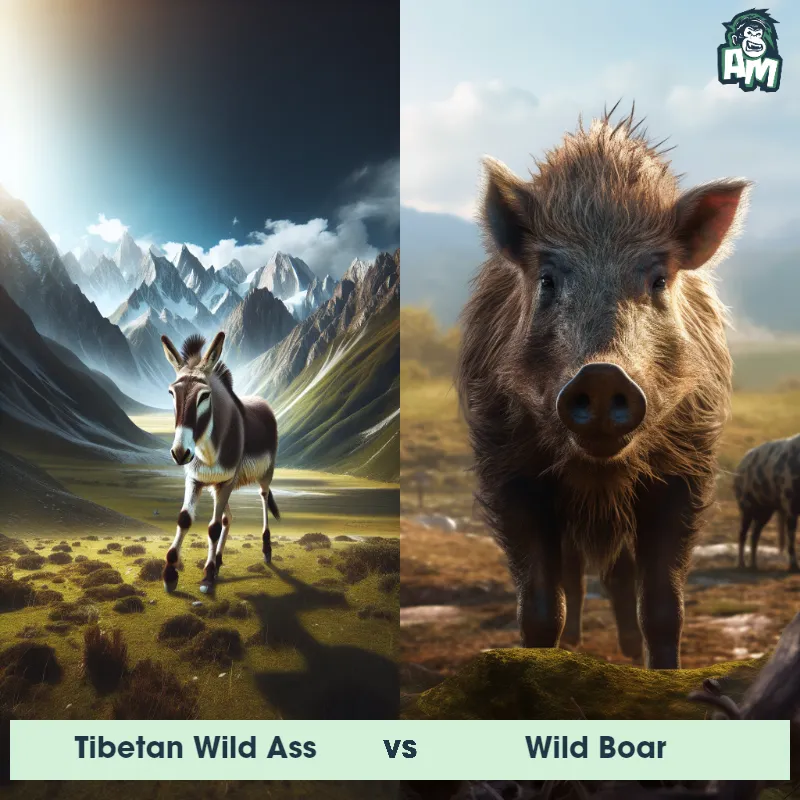The Wild Boar
The Wild Boar, also known as Sus scrofa, is a large and sturdy mammal that belongs to the Suidae family. It is distinguished by its stocky body and a prominent, elongated snout. Typically, wild boars have bristly fur that ranges in color from brown to black, with a lighter underbelly. Adult males can weigh up to 660 pounds 300 kg and have imposing curved tusks that can grow up to several inches long. They have a keen sense of smell and are known for their strong social structure, often living in groups called sounders. Wild boars are omnivorous and have a varied diet, including roots, tubers, fruits, insects, small animals, and carrion.

| Wild Boar | |
|---|---|
| Size | Up to 3 feet tall at the shoulder (91.44 cm), length up to 6 feet (1.83 m) |
| Weight | Up to 300 pounds (136.08 kg) |
| Speed | Speed: 30 mph (48.28 km/hr) |
| Key Strength | Powerful tusks and aggressive behavior |
| Biggest Weakness | Poor eyesight |
| Scientific Name | Sus scrofa |
| Family | Suidae |
| Habitat | Forests, grasslands, and wetlands |
| Geography | Europe, Asia, and North America |
| Diet | Omnivorous, eats roots, tubers, insects, small mammals, and carrion |
| Lifespan | 8 years - 18 years |

The Wild Boar
The Wild Boar, also known as Sus scrofa, is a large and sturdy mammal that belongs to the Suidae family. It is distinguished by its stocky body and a prominent, elongated snout. Typically, wild boars have bristly fur that ranges in color from brown to black, with a lighter underbelly. Adult males can weigh up to 660 pounds 300 kg and have imposing curved tusks that can grow up to several inches long. They have a keen sense of smell and are known for their strong social structure, often living in groups called sounders. Wild boars are omnivorous and have a varied diet, including roots, tubers, fruits, insects, small animals, and carrion.
Fun Fact: Wild Boars are excellent diggers and can root up the ground with their powerful snouts, even turning over heavy rocks or logs in search of food.
| Wild Boar | |
|---|---|
| Size | Up to 3 feet tall at the shoulder (91.44 cm), length up to 6 feet (1.83 m) |
| Weight | Up to 300 pounds (136.08 kg) |
| Speed | Speed: 30 mph (48.28 km/hr) |
| Key Strength | Powerful tusks and aggressive behavior |
| Biggest Weakness | Poor eyesight |
| Scientific Name | Sus scrofa |
| Family | Suidae |
| Habitat | Forests, grasslands, and wetlands |
| Geography | Europe, Asia, and North America |
| Diet | Omnivorous, eats roots, tubers, insects, small mammals, and carrion |
| Lifespan | 8 years - 18 years |
Match Highlights
Wild Boar Matchups
We use AI to simulate matchups between the Wild Boar and other animals. Our simulation considers size, strength, and natural predatory behaviors to determine the most likely outcome.

Can't find the Matchup you want?
Create Your Own MatchupWild Boar: Diet, Predators, Aggression, and Defensive Behaviors
What do Wild Boars eat?
Wild Boars are omnivores, meaning they eat both plants and animals. Their diet includes roots, tubers, nuts, berries, insects, small animals, and even carrion. They are opportunistic feeders and will consume whatever is readily available in their habitat.
Do Wild Boars have any predators?
Despite their large size and powerful tusks, Wild Boars have several natural predators. Some of their main predators include wolves, bears, and big cats such as tigers and leopards. Young Wild Boars are particularly vulnerable to predation by these animals.
Are Wild Boars aggressive?
Wild Boars are known for their aggressive behavior, especially when they feel threatened or cornered. They can be particularly dangerous when they have piglets to protect. Adult males, known as boars, have been known to charge at humans or other animals if they perceive them as a threat.
Do Wild Boars fight?
Wild Boars are territorial animals and will often engage in fights with other boars to establish dominance or defend their territory. These fights can be fierce, involving charging, tusking, and vocalizations. Boars will also fight during the breeding season to determine mating rights with female Wild Boars.
How do Wild Boars defend themselves?
Wild Boars have several defense mechanisms to protect themselves from predators and threats. Their most notable defense is their tusks, which can be used for both offense and defense. They also have a keen sense of smell and hearing, allowing them to detect danger from a distance. In addition, Wild Boars are fast runners and can escape threats by fleeing into dense vegetation.
What is the biggest weakness of Wild Boars in a fight?
Despite their formidable tusks and aggressive behavior, Wild Boars have a vulnerability in their relatively thin skin and lack of protective fur or armor. This makes them susceptible to injuries during fights, especially when facing larger predators or other boars. Additionally, Wild Boars may tire quickly during prolonged confrontations, making them more vulnerable to attacks.
Fun Fact: Wild Boars are highly adaptable and have successfully thrived in a wide range of habitats, from dense forests to open grasslands across Europe, Asia, and North Africa.
Fun Fact: Wild Boars are known for their ability to swim long distances and are even capable of crossing rivers and lakes to access new territories or find food sources.




